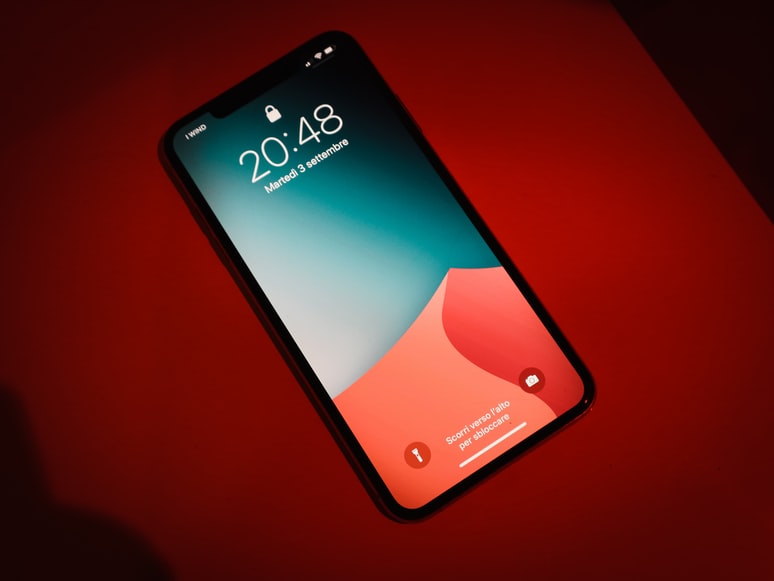How To Choose The Best IoT Development Kit?
August 1, 2023

toc impalement
IoT development kits and boards play a pivotal role in the IoT revolution, empowering developers and enthusiasts to bring their innovative ideas to life easily and efficiently. They serve as a comprehensive package, offering a diverse range of components, sensors, connectivity options, and software tools that streamline the process of building IoT applications.
With pre-integrated hardware and software, these kits provide a ready-to-use platform for rapid prototyping, experimentation, and seamless integration with cloud services – ultimately accelerating the time-to-market for IoT innovations. These elements are essential regardless of the scale and complexity of your solution, as well as whether you are looking for custom IoT development services or use ready-made SDKs.
As the IoT landscape continues to expand, selecting the fitting development kit has become a critical decision. In this article, we will delve into the world of IoT universal development kits and boards, exploring their significance, the market’s breadth, essential considerations for making an informed choice, and finally, an in-depth analysis of some top IoT development kits and their distinctive advantages.
How IoT Kits Simplify Prototyping?
IoT development kits typically consist of a combination of hardware components, software tools, and documentation that streamline and simplify the process of building Internet of Things applications:
- Microcontroller
- Connectivity modules
- Sensors and actuators
- Power supply
- Breadboard or PCB
- Development Board
- Software development tools.
IoT development kits come with pre-selected and pre-configured hardware components, ensuring compatibility and seamless interaction between the various elements. This eliminates the need for developers to source and integrate individual components, saving valuable time and effort.
The availability of a comprehensive development environment and easy-to-use software libraries enables developers to quickly prototype their IoT ideas. By abstracting much of the hardware intricacies, IoT development kits allow developers with varying levels of expertise to work on IoT projects without having to be experts in electronics or embedded systems.
Since much of the low-level hardware setup is abstracted by the development kit, you can concentrate more on the application logic and functionality. Moreover, IoT development kits are designed to support scalability, allowing developers to start with a basic prototype and then scale up to more complex and robust solutions as the project progresses.
What To Consider Choosing IoT Development Kits?
With a myriad of options available in the market, selecting the best IoT development kit becomes a critical decision that can profoundly impact the success of your project. Let’s explore key aspects that will shape your IoT development journey.
- Clearly define the purpose of your IoT project and the specific application you want to develop. Different IoT development kits cater to various industries and use cases, so choosing one that aligns with your project’s requirements is crucial.
- Check the processing power, memory, storage, and available input/output options to ensure they meet the demands of your application.
- Determine the type of connectivity your IoT project requires. Look for kits with Wi-Fi, Bluetooth, Zigbee, cellular, or other communication modules based on your device’s intended network connectivity.
- Assess the software tools and programming languages supported by the development kit. Choose a kit that aligns with your team’s skillset and expertise.
- Consider whether the kit offers seamless integration with cloud platforms, as cloud services are essential for data storage, analytics, and remote device management.
- Check if the kit has an active user community, as well as readily available documentation, tutorials, and customer support.
- Check whether the kit can work seamlessly with other IoT devices and platforms, promoting interoperability in a heterogeneous IoT ecosystem.
TOP-5 IoT Development Kits
Here are the top-5 IoT development kits you have been looking at so far. While the list begins with AVR-IoT cellular mini, it is worthwhile to see what are the other kits.
Check them out here:
AVR-IoT cellular mini by Microchip Technology
A perfect choice for developers seeking seamless integration of IoT devices with 5G networks. Built around the efficient AVR128DB48 8-bit MCU, this compact MCU board establishes a robust connection to 5G LTE-M narrowband IoT (NB-IoT) networks, boasting low power consumption for effortless deployment.
With its versatile capabilities, the development board serves as an excellent starting platform to construct sensor and actuator nodes on 5G NB-IoT networks, ideal for mobile or remote devices with limited access to long-range (LoRa) or another low-power wide-area network (LPWAN) solutions.
The dev board comes pre-configured, effortlessly relaying data from onboard light and temperature sensors to the cloud, seamlessly viewable through Microchip’s sandbox portal. This portal empowers real-time tracking and monitoring of devices from any remote location, offering immense value across a myriad of applications, from agriculture and industrial sectors to energy management, goods transportation, alarm systems, building automation, and remote monitoring.
ESP32-S3 DevKitC-1 by Espressif Systems
A newly-developed board featuring the “ESP32-S3-WROOM-1,” – which is a versatile Bluetooth and Wi-Fi LE MCU module. It seamlessly integrates comprehensive Wi-Fi as well as Bluetooth LE functionalities.
The ESP32-S3-DevKitC-1, which paves the way for the future of Bluetooth and Wi-Fi LE development, is at your fingertips. Its feature-rich design and flexibility make it an ideal choice for beginners and seasoned developers alike, opening up a world of possibilities in the realm of IoT innovation.
Designed with convenience in mind, a maximum of these I/O pins on a specific module are conveniently damaged on the pin headers lying on both sides of the board, facilitating effortless interfacing with various peripherals. Whether you prefer connecting peripherals having jumper wires or mounting the “ESP32-S3-DevKitC-1” on its breadboard, its adaptability offers endless possibilities.
A standout feature of this board is the inclusion of a debug port (UART/USB) along with a separate native USB port, streamlining the process of uploading, debugging, and USB communication at the same time.
Raspberry Pi 4 Model B by Raspberry Pi Foundation
The Raspberry Pi 4 Model B has found widespread use in various fields, including educational projects, DIY electronics, home automation, media centers, web servers, robotics, and much more. Its affordable price, community support, and a broad ecosystem of accessories and add-ons have made it a popular choice for both beginners and experienced developers, as well as educators looking to teach programming and computer science concepts.
The board is powered by a ‘Broadcom BCM2711’, the quad-core of which is a Cortex-A72 (ARMv8). Further, it has an enriched 64-bit SoC clocked at 1.5 GHz. The Raspberry Pi 4 Model B is available in different RAM configurations, offering 2GB along with 4 and 8GBS of LPDDR4 SDRAM. The improved graphics performance makes it suitable for multimedia applications and gaming projects.
The board offers comprehensive connectivity options, including two USB ports of 3.0 power, two 2.0 ports, dual-band 802.11ac Wi-Fi, Bluetooth 5.0, Gigabit Ethernet, and HDMI output. Сompatible with various operating systems, including Raspbian (now called Raspberry Pi OS), Ubuntu, and other Linux distributions, as well as third-party operating systems like RetroPie for gaming enthusiasts.
Matter-enabled kits by Texas Instruments Inc.
The company has recently introduced a pair of cutting-edge wireless MCU software development kits, showcasing its advanced Wi-Fi and Thread SimpleLink wireless MCUs. These innovative kits are meticulously designed to streamline the seamless integration of the Matter protocol into a wide range of IoT applications, empowering engineers to create secure, ultra-low power, smart-home, and industrial-automation solutions that effortlessly connect devices across diverse proprietary ecosystems.
For long-range connectivity applications, these wireless MCUs showcase an integrated power amplifier with an incredibly low power consumption of merely 101 mA at 20 dBm, setting the industry standard for power efficiency and further conserving battery life, particularly at higher output power levels.
For exceptional sensor capabilities, the kit is equipped with accelerometers, gyroscopes, a magnetometer, and various sensors for temperature, humidity, pressure, and ambient light. The inclusion of user buttons, LEDs, and a power-on switch ensures ease of use, while u-blox’s CloudLocate cloud service and CellLocate mobile-network–based location service enhance its comprehensive functionality.
Giant Board by Groboards
The Giant Board stands out due to its compact size, rich set of features, and considerable computing power. Despite its small size, the Giant Board is equipped with various connectivity options. It includes USB ports, UART, SPI, I2C, GPIO pins, and other interfaces for connecting peripherals and sensors.
The Giant Board is designed with a focus on compactness, making it an ideal choice for projects where space is a constraint. The board’s small size allows it to be easily integrated into tight spaces or used in portable and wearable applications.
The Giant Board is designed to be open-source, which means that the hardware design and software can be freely accessed and modified by the community, fostering collaboration and innovation.
Conclusion
The world of IoT development is continuously evolving, offering a wide array of development kits and boards that cater to diverse applications and project requirements. From well-established industry players like Microchip Technology to newcomers like Groboards, each company brings its unique set of offerings to the table.
As the IoT market continues to expand, trends indicate an increasing focus on power efficiency, long-range connectivity, and seamless integration with cloud platforms. The adoption of emerging protocols like Matter further pushes the boundaries of IoT development, enabling secure interoperability between various smart devices.
By choosing the right IoT development kit, developers can streamline their prototyping process, accelerate project development, and deliver innovative IoT solutions that shape the future of technology.
Read Also:


















Comments Are Closed For This Article